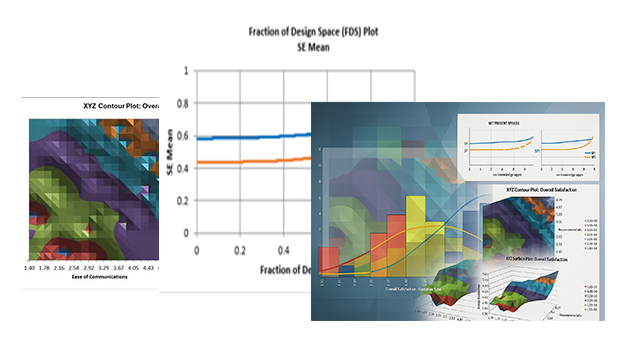Control Chart Templates: Time-Weighted
- Home /
- Attribute C ARL



1. Assumes parameters are known and shift occurs at the start
(zero state). Practically, this will not likely be the case in use,
but it allows ARL comparison across chart types with recommended
parameter settings.
2. ARL Shewhart Individuals: Test 1 Only uses Excel
formula: =1/((1-NORM.S.DIST(3-A3,1))+(1-NORM.S.DIST(A3+3,1))).
3. ARL Shewhart Individuals All 8 Tests For Special Causes -
SigmaXL default options calculated using Monte Carlo
simulation with 1e6 replications.
4. EWMA ARL0 370, CUSUM ARL0 370
and CUSUM FIR ARL0 370 parameter values are
optimized to minimize ARL for Shift in Mean = 1 Sigma while
maintaining an ARL0 value = 370.4. See respective sheets for other
optimal Shift in Mean values.
5. Comparison of ARLs for EWMA, CUSUM, CUSUM FIR with ARL0 500, 465
and 168 are given in separate sheets.
6. ARL for EWMA is calculated using xewma.arl in the R spc package
(Knoth). Arguments: sided = "two"; limits = "fix". This function
numerically solves the related ARL integral equation by means of the
Nystroem method based on Gauss-Legendre quadrature.
7. ARL for CUSUM is calculated using xcusum.arl in the R spc
package. Arguments: sided = "two".
8. EWMA K is calculated using xewma.crit function in the R spc
package. R optimize is used with xewma.arl and xewma.crit to obtain
optimal Weight (Lambda) values. See Bloomfield, Exponentially
Weighted Moving Average Chart.
9. CUSUM h is calculated using xcusum.crit function in the R spc
package. CUSUM FIR with 50% headstart uses R optimize with
xcusum.arl and xcusum.crit to obtain optimal k and h values
(excluding h = 5 and 4 example above). See Bloomfield, Cumulative
Sum Control Chart.
REFERENCES:
[1] Bloomfield, P., Statistical Methods for Quality and
Productivity Improvement / Statistical Process Control, ST435/535
course slides, Exponentially Weighted Moving Average Chart,
https://www.stat.ncsu.edu/people/bloomfield/courses/st435-535/slides/Montgomery-ch09-sec02-03.pdf
[2] Bloomfield, P., Statistical Methods for Quality and
Productivity Improvement / Statistical Process Control, ST435/535
course slides, Cumulative Sum Control Chart,
https://www.stat.ncsu.edu/people/bloomfield/courses/ST435-535/slides/Montgomery-ch09-sec01-01.pdf
[3] Crowder, S.V. (1989), Design of Exponentially Weighted Moving
Average Schemes, Journal of Quality Technology, 21:3,
155-162, Tables 4, 6.
[4] Knoth, S. (2019), spc: Statistical Process Control
Calculation of ARL and Other Control Chart Performance Measures, R
package, version 0.6.3:
https://cran.r-project.org/web/packages/spc/index.html
[5] Lucas, J.M. and Crosier R.B. (1982), Fast initial response for
cusum quality-control schemes: Give your cusum a headstart,
Technometrics 24, 199-205, Table 1.
[6] Lucas J.M. and Saccucci M.S. (1990), Exponentially weighted
moving average control schemes: Properties and enhancements,
Technometrics 32, 1-12, Figures 3, 4.
[7] Montgomery, D.C. (2013), Introduction to Statistical Quality
Control, Seventh Ed., Wiley, pp. 199-201 and Tables 9.5, 9.11.